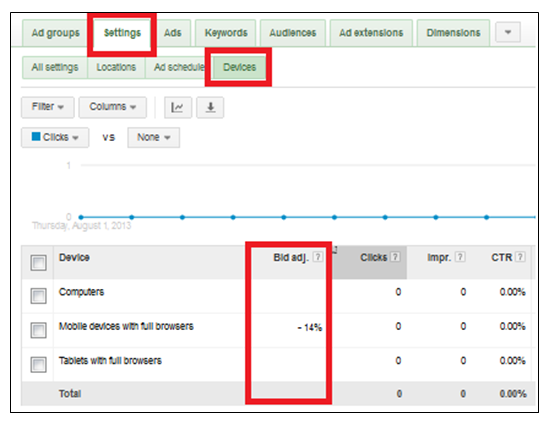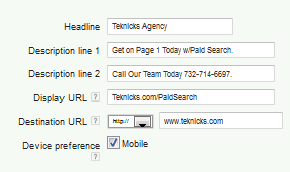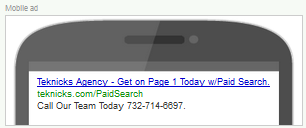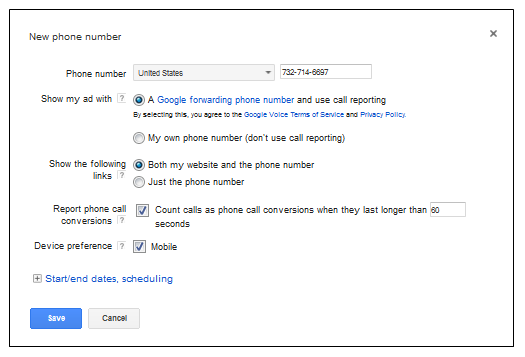
Step 1: Set your mobile bids
While search traffic is undeniably increasing on mobile devices, search behavior is different and you will want to adjust your bids for mobile paid search traffic. To do this, head to the settings tab and click on devices.

This is crucial to running mobile ads, because Google automatically opts you into bidding the same on desktop, tablet & mobile; which could be wasting your budget.
To help you determine your optimal mobile bid, review your analytics data to see how people are behaving on your site when they reach it from a mobile device. Check for a high bounce rate, see how site engagement compares to desktop, and see if your mobile traffic has a strong conversion rate.
Step 2: Create mobile preferred ads
For mobile ads it’s important to remember that screens are smaller and people want answers much quicker. Keeping that in mind, your ad copy will be different from your desktop versions. Keep it short and to the point and always have a call to action.
When creating mobile preferred ads, just check off the box “device preferred: mobile” and you are set!


Step 3: Launch a call extension
If you have a call center or sales team, you can set-up click to call ads to drive more qualified leads/prospect for your business. A phone call is 15 times more likely to convert over a regular web visit, so it’s in your best interest to implement a call extension.

Most likely, your call center is available during regular business hours and you’ll need to schedule this extension based on their availability. To do so, click on “start/end dates scheduling” and set hours for the week. Scheduling the call extension based on your call center’s hours will improve the user’s experience, because you wouldn’t want potential customers to place a call when there is no one to assist them.
In addition, you also have the option to use a Google forwarding phone number or your business line. While the latter will allow you to display your call center’s number, you’ll be missing out on key data that the Google forwarding number can provide. At no additional cost, Google’s forwarding number will report on manually dialed calls, call length and missed calls. This is valuable when analyzing the success of your mobile ads and will help you make smarter decisions. With this data you can determine if the morning hours drive more calls and leads, and as a result you would increase your bids during these times. This is based on your preference, but we recommend having as much data as possible.
Mobile ads can be tricky and it’s important to set-up your campaign so that your advertising dollars are put towards good use. Following these steps will get you off on the right path, and continuing to optimize campaigns will lead to the highest chance for success. Have you gone mobile with your marketing strategy yet?